The Mammoth Hot Springs Yellowstone rock formation is a beautiful sight that you should not miss on your trip to Yellowstone National Park. You can see the majestic hot springs steaming and the thermal travertine formations. It is beyond gorgeous and certainly a learning experience for both me and the family.
Because Limestone is a relatively soft type of rock the crystallized calcium carbonate formations to grow much faster than other formations. The thermal flows show much variability with some variations taking place over periods ranging from decades to days. It is such an interesting geological feature that you have to see in person because the pictures don’t do it justice. The algae formed on the travertine shelves makes it look more like a coral reef than a former volcano.
The step-like terraces form as heated water moves along the Morris-Mammoth Fault. The hot water carries dissolved calcium and bicarbonate to the surface of the terraces where pressure lessens. Carbon dioxide then escapes as gas and the carbonate combines with calcium to precipitate as travertine.
How Mammoth Hot Springs Was Formed
At Yellowstone National Park each year, the rain and melted snow seeps into the earth. The cold water is quickly warmed by a partially molten magma chamber underground. It is a remnant of a cataclysmic volcanic explosion that occurred 600,000 years ago. This is an amazing illustration of natural science for both children and adults alike.
The heated water rises up through a system of small fissures in the ground. This is where the water interacts with hot gases like carbon dioxide rising up from the magma chamber. As some of the carbon dioxide is dissolved in the hot water, a weak, carbonic acid solution is formed. Learn more about it here.
When the water, limestone, and carbon dioxide mixture hits the air, the carbon dioxide is released and the water deposits the limestone onto the ground. The limestone is a white chalky mineral that forms the terraces.
Lower Terrace Boardwalk
The Lower Terrance Boardwalk can be accessed from the the parking lot or the Grand Loop Road. You can see the Liberty Cap on the lower terrace boardwalk.
The Liberty Cap
The Liberty Cap is rises 37 feet in the air. It is a hot spring cone that was named in 1871 for peaked caps worn during the French Revolution. The cone formed from a steady flow of hot water emerging from a single source, depositing dense layers of travertine.
It is no longer active possibly because the water found another way to flow or it became sealed up with travertine deposits. The funny part is that these features could become active again at any moment. Earth quakes could easily change the orientation of the plates and make a change in the terraces. Learn more about the Liberty Cap here.
Minerva Spring
The lower terrace also features Minerva Spring. It is one of the most colorful hot springs. Minerva Spring was completely dry in the early 1900s, but started flowing again in 1951. It is so interesting how the features can change over time. Apparently, the travertine terraces of Minerva Spring can grow at a rate of as much as 8.5 inches a year.
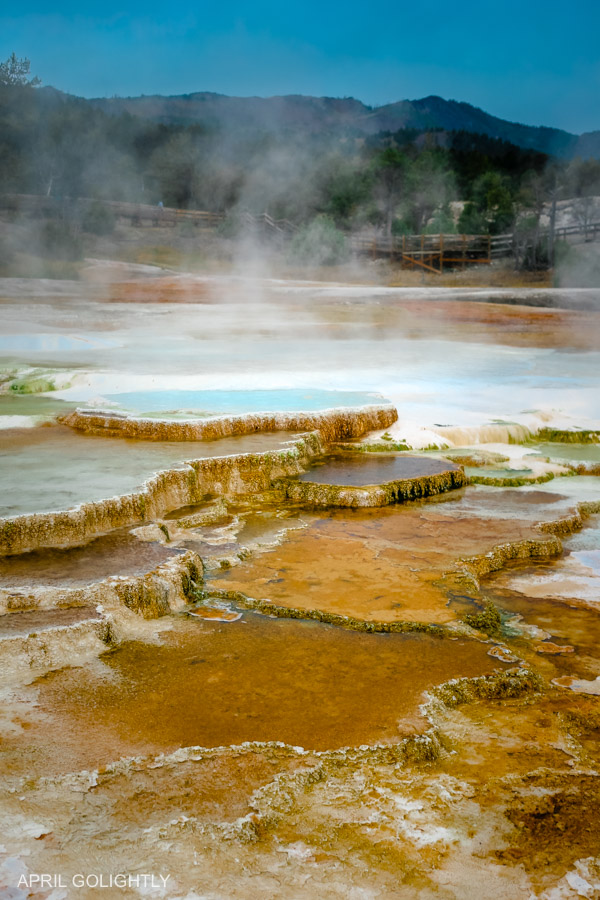
Upper Terrace Drive
The Upper Terrace is amazing and a must see in Yellowstone National Park. You can access the upper boardwalk from the one-way Upper Terrace Drive and parking lot. The road winds among springs for 1.5 miles before it loops back for a half mile.
The Upper Terraces at Mammoth Hot Springs include Prospect Terrace, New Highland Terrace, Orange Spring Mound, Bath Lake, White Elephant Back Terrace and Angel Terrace.
Orange Spring Mound is massive and named for its color. The spring from this mound is cooler (157 degrees F) than other thermal features at Mammoth Terraces which allows orange-colored cyanobacteria to dominate.
Fort Yellowstone
The Mammoth Terraces extend all the way from the hillside, across the Parade Ground, and down to Boiling River. The Mammoth Hotel, as well as all of Fort Yellowstone, is built upon an old terrace formation known as Hotel Terrace. There was some concern when construction began in 1891 on the fort site that the hollow ground would not support the weight of the buildings. Several large sink holes can be seen out on the Parade Ground. This area has been thermally active for several thousand years.
Pinedale Glaciation
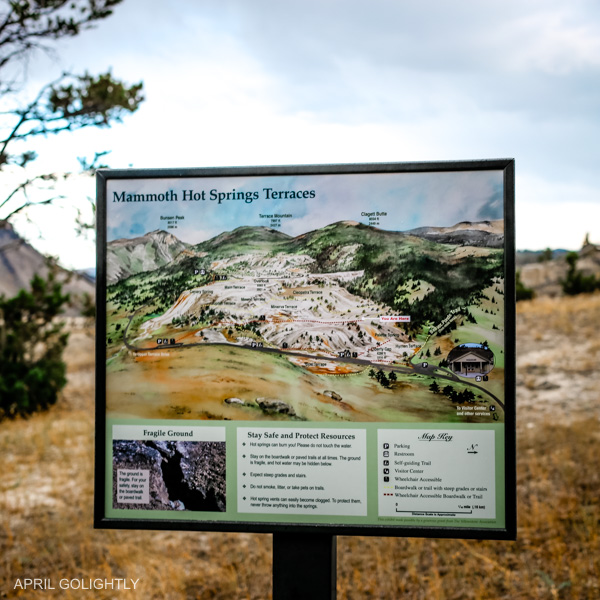
Can you Swim In Mammoth Hot Springs?
You cannot swim in Mammoth Hot Springs because they are protected and also because they are too hot. However, you can sometime swim in the boiling river which comes from Mammoth Hot Springs.
Where is Mammoth Hot Springs?
Mammoth Hot Springs are located near the North Entrance to Yellowstone National Park. The north entrance is where you can see the Roosevelt Arch. It was first major entrance for Yellowstone was at the north boundary.
What to do in the Mammoth Hot Springs?
You can tour the hot springs of mammoth alone on a guided tour.
Is Mammoth Hot Springs worth it?
Yes, Mammoth Hot Springs is worth visiting. It is both beautiful and filled with history and science! The Elk like to congregate in the area so you will likely see a lot of wildlife as well.
Start your Yellowstone journey in this cute town – Red Lodge Montana.
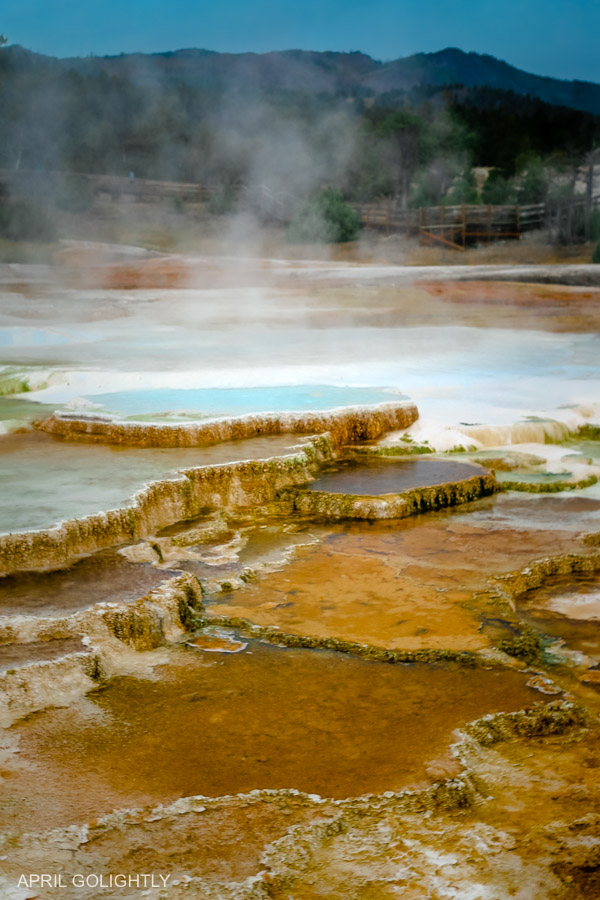


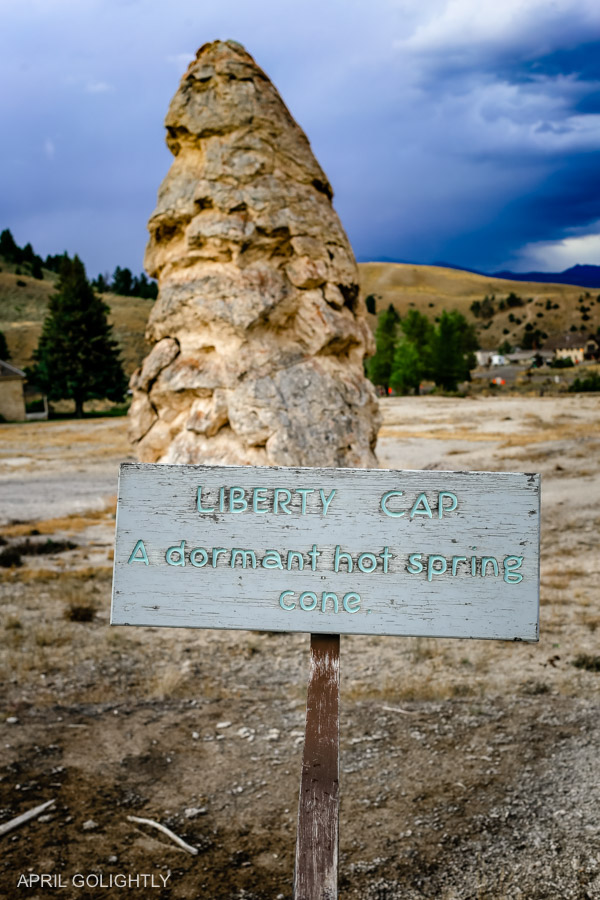
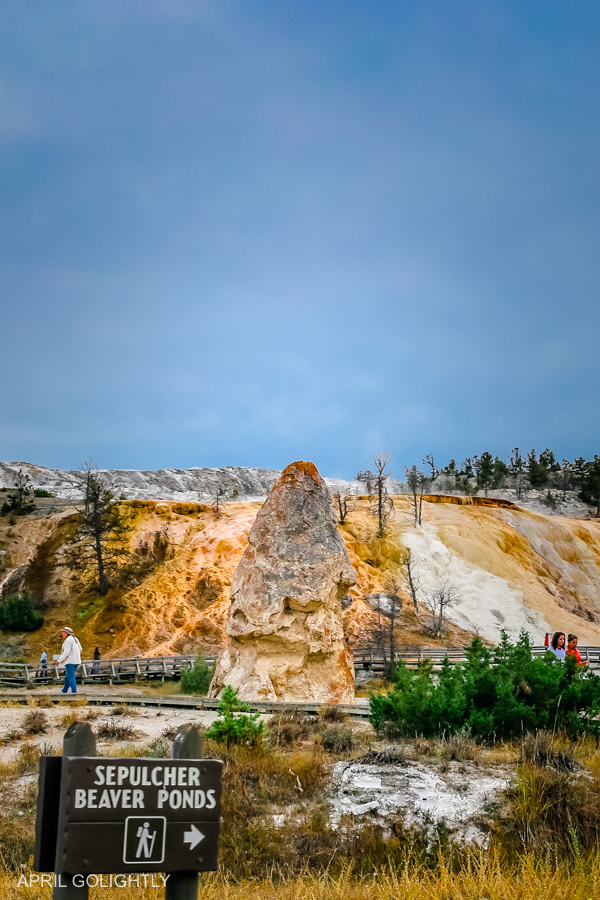


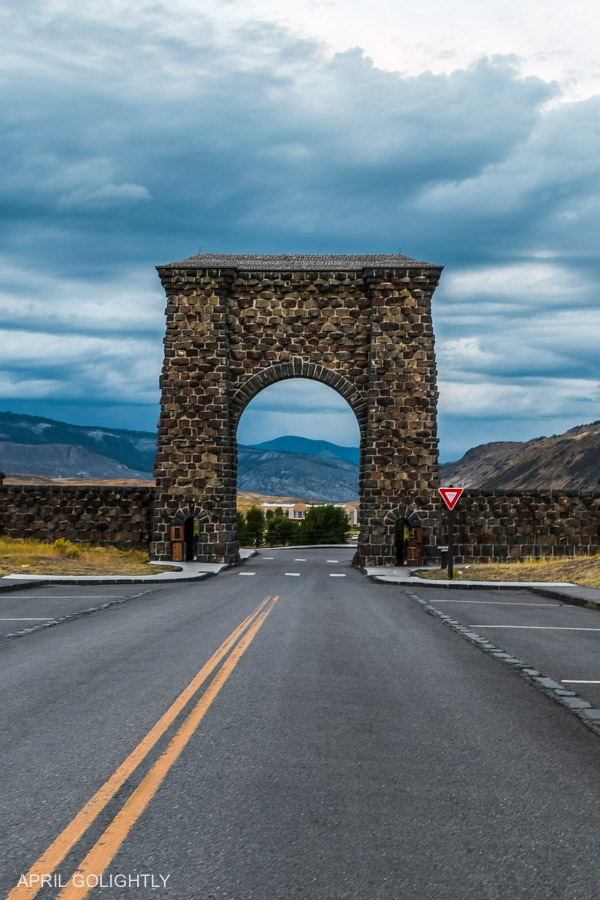

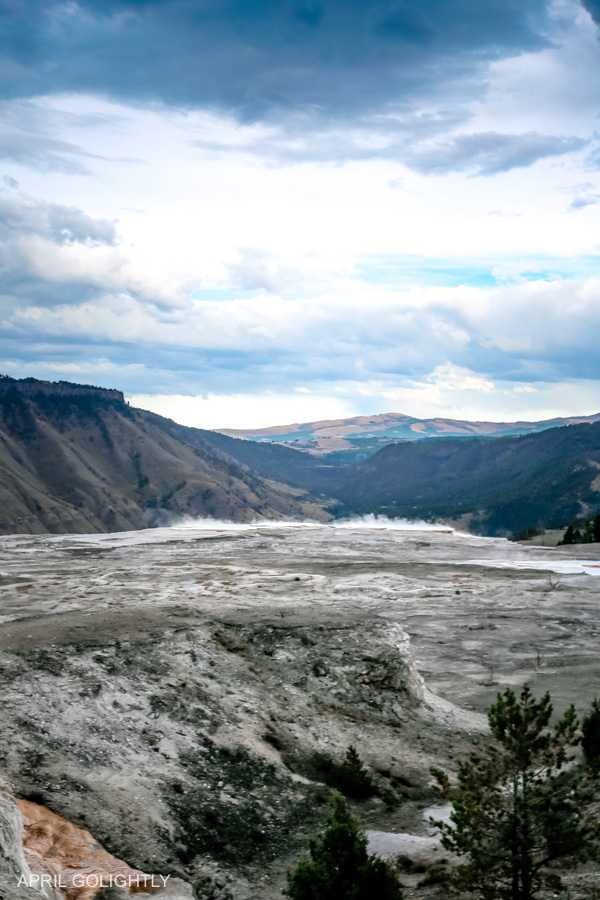
I love warm weather, it allows you to travel comfortably light and engage in various activities. My family and I always choose places with beautiful nature that allow us to spend an active time. I love surfing, so it is very important for me to have a good beach, waves and equipment
A lovely write-up. Thanks. Although from the UK I have been lucky enough to visit Yellowstone in the summer and the fall and found the contrasts amazing. A beautifully unique environment.